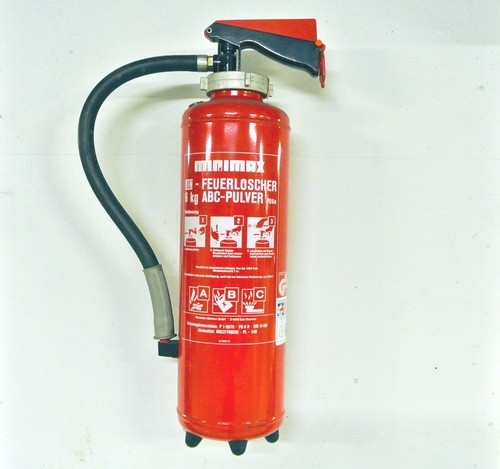A fire extinguisher is an invaluable tool when it comes to fighting fires, but if you don’t know how to use it properly it could exacerbate the problem or simply prove useless.
This month, we’ll be looking at the correct way to use a fire extinguisher, both in terms of the types of fires you should be using them on and how to appropriately go about using it.

Don’t Blindly Rush In – Stop and Think
Absolutely central to fighting a fire is stopping and thinking about whether or not the fire is worth risking injury (or worse) over, namely in that you will be able to put it out or rob it of its fuel by intervening.
If the fire is too large to fight, or the extinguisher you’re equipped with cannot be used on the type of fire you’re confronted with, evacuate the building and call the fire brigade.
This is one of the easiest mistakes people make when fighting a fire, as the urge to act quickly and actually do something as opposed to nothing at all while assessing the situation can be overpowering.
You must fight the urge to act immediately in order to assess the fire, thereby making the most informed decision possible given the circumstances. Then you can act.
Don’t Forget to Judge the Type of Fire
Hinted at above, the type of fire you’re dealing with is all-important when you pick up your extinguisher.
The type of fire and what is fueling it specifically will determine what type of fire extinguisher you use, and the following categories cover this issue:
- Type A: Fires fueled by solids such as papers, woods and plastics
- Type B: Fires fueled by flammable liquids like oil, petrol and paraffin
- Type C: Fires fueled by flammable gases including oil, butane and methane
- Type D: Fires involving metals such as aluminium, titanium and magnesium
- Type E: Used for electrical equipment fires
- Type F: Fires involving cooking oils and fats
Each extinguisher contains a different fire fighting material, relevant to combating certain fires and the fuel that feeds them.
Foam fire extinguishers, water fire extinguishers and carbon dioxide fire extinguishers are just some of the contents you could find in a fire extinguisher, for example.
You will need to assess carefully what is fueling the fire before choosing the correct fire extinguisher.
A fire risk assessment carried out by a professionally certified individual will help to ascertain what fire extinguishers will be most suitable for your property, determining what will be the most likely cause of a fire and therefore which extinguisher would be most appropriate to have. However, if you do not have the correct extinguisher for the fire, you must evacuate the building; using an incorrect fire extinguisher on a flame may only make the fire worse, so call the emergency services, leave it to the professionals and do not put yourself at risk.
Don’t Forget to Plan an Evacuation Route
Preparation is the most essential part of fighting a fire, and in planning your possible evacuation route in the event that the fire cannot be put out by your efforts and your fire extinguisher alone, you have the potential to save lives.
Most people overlook planning an evacuation in their home, though it is a legal requirement for a business; be sure to plan your evacuation from your home too to avoid being caught out.
Always Turn the Power Off
When using a fire extinguisher on an electrical fire, gas fire or cooking oil fire, you need to ensure that you turn off the power or heat to stop it from feeding the fire further or from reigniting.
Cutting off the fuel to a fire is necessary to properly quell a fire, and another way you can help to do this is to keep your doors shut. Open doors allow the free movement of oxygen, which flames need in order to continue and grow, so by keeping them shut you can help to stop the spread of a fire, making it easier to extinguish in the process too.
Don’t Leave a Freshly Extinguished Fire Alone
Once you have extinguished the fire, you must never turn your back on it and leave the room.
If there is even the smallest spark still lingering about, you could discover the hard way that the fire is not completely dead. You should monitor the site of the fire and carefully search for any parts that are not quite extinguished yet. Only once you have kept an eye on it for a while will you be able to safely leave the area.
Always Read the Instructions on Your Fire Extinguisher Before Use
Ideally, you will have read the instructions plastered on the side of the fire extinguisher long before a fire ignites, but if not you must briefly read the instructions before using it on the fire. Greater familiarity with the fire fighting tool will prove invaluable in the event of fire, so be sure to get to know your extinguisher beforehand.
Protect & Detect is a leading fire safety and security company, servicing Ipswich, Colchester, Cambridge, Bury St. Edmunds, Chelmsford and beyond.
Protect & Detect offers a wide range of fire safety and security services including; fire alarms, fire extinguishers, burglar alarms, intruder alarms, fire sprinkler systems, access control, door entry systems, CCTV, barriers, nurse and warden calls. Contact our friendly team today for a quick quote.

